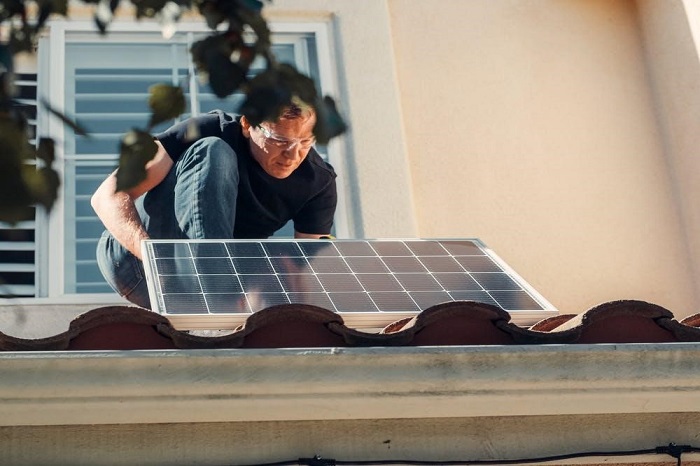Solar power is one of the most exciting and potentially impactful forms of renewable energy. Not only does it have a low environmental impact, but solar panels are also incredibly flexible—you can put them almost anywhere you want! This makes solar power an ideal choice for powering small devices and homes, as well as large commercial projects. In this blog post, we will explore how flexible solar panels work and why they are such a promising option for energy production.
If you’re interested in powering your space with green energy, you should think about investing in flexible solar panels. These systems are excellent for homes with constrained space and roofs that are challenging to access. They are wonderful additions to commercial properties as well.
Flexible solar panels are great because they can be mounted on any surface. This means that they can be used in a variety of settings, including residential homes, businesses, and even government buildings.
Flexible solar panels work best when the sun is shining, so they can generate a good amount of electricity even during cloudy weather. Additionally, these systems can be configured in a variety of ways to optimize their output. This means that they can be paired with battery storage to provide backup power in case of an outage. As a result, flexible solar panels are an excellent choice for anyone looking to reduce their carbon footprint and generate clean energy.
There are a few things to consider when purchasing a flexible panel system. First, be sure to compare the various options available. You’ll want to find a system that offers the best overall value for your money. Second, be sure to factor in your needs and wants. Finally, be sure to contact a reputable installer who can help you get started on your solar journey. They’ll have all the information you need about flexible solar panels and will be able to guide you through the process of installing them.
How does a flexible solar panel work?
Table of Contents
A flexible solar panel is made up of a number of thin, flexible sheets that can be rolled up for storage or transportation. When the panels are unfurled and connected to an energy source, they transform into a large solar panel. This type of solar panel is able to bend and stretch to follow the sun’s movement across the sky, making it more efficient at converting sunlight into electricity.
Benefits of using a flexible solar panel
A flexible solar panel is a type of solar panel that is specifically designed to be flexible. This makes it easier to install and allows for more efficient use of the space on your roof. Flexible solar panels also tend to be more durable than other types of solar panels, which means they can last longer and perform better in harsher weather conditions. Some other benefits of using a flexible solar panel include the following:
-They are easier to install.
-They can be used in more places.
-They are often more durable than other types of solar panels.
-They are more energy efficient.
Advantages of using a flexible solar panel over traditional solar panels
Traditional solar panels are rigid and can be difficult to install. They also require a lot of space on your roof, which may not be available in some cases. Flexible solar panels, on the other hand, are made from flexible materials like plastic or silicone and can be easily installed anywhere you want without having to worry about space restrictions.
Flexible solar panels are also more efficient than traditional solar panels. This is because they can absorb more energy from the sun than rigid panels. Additionally, they can be rolled up when not in use to save space.
Finally, flexible solar panels are more affordable than traditional solar panels. This is because they are made from cheaper materials and don’t require as much installation work.
How to install a flexible solar panel
Installing a flexible solar panel is a simple process that can save you money on your energy bills. All you need is a ladder, some tools, and some sunlight.
1. First, determine the area where you want to install the panel. You’ll need at least twice as much space as the panel itself.
2. Mark out the outline of the panel with painter’s tape or construction paper. Be sure to leave enough space around the edges so that you can later attach the bracketing system.
3. Next, find a location on your roof where there is good sunlight exposure. The best spot will be on an east or west-facing wall since these are the times of day when most sunlight falls onto your house.
4. If possible, make sure that your roof is flat and smooth in order to reduce installation time and potential damage from bumps and cracks in the surface.
5. Cut two pieces of 18-gauge wire about 30 feet long each using a tin snips or clippers attached to a sturdy pole like a stepladder (a chainsaw may also be used). Strip one end of each wire bare using wire cutters or pliers, then twist them together until they form a U-shape (as seen in the picture below). This will form one side of your bracketing system. Make sure that both ends of each wire are twisted identically so that they will hold their shape during installation and expansion
How to choose the best flexible solar panel for your needs
Different types of flexible solar panels are available on the market, such as monocrystalline and polycrystalline. Monocrystalline panels are made from a single crystal of silicon, while polycrystalline panels are made from multiple crystals. The advantage of monocrystalline panels is that they produce more energy than polycrystalline panels.
The next factor to consider when choosing a flexible solar panel is the power output. You will need to determine your energy needs and chose a panel with the maximum power output that meets your requirements. For example, if you require 100 watts of power, a monocrystalline panel would be best for you. If you only need 25 watts of power, a polycrystalline panel would be better suited for you.
The type of framing used to hang the flexible solar panel also affects its performance. If the framing is inadequate, the sun’s energy will not reach the flexible solar panel properly and it will not generate enough electricity to meet your needs. Make sure to consult with an expert before choosing a flexible solar panel to ensure that it is compatible with your specific situation and needs.
Conclusion
Technology that can change and expand with us is essential as the world develops and becomes more advanced. Flexible solar panels are one such example. Check out all the details on Univix to learn more about how and from what materials these panels are created. They can bend and flex in any direction because of this. These are ideal for locations with limited sunshine or potential impediments. These panels offer an unique approach to utilize renewable energy sources in addition to being useful for energy production.







